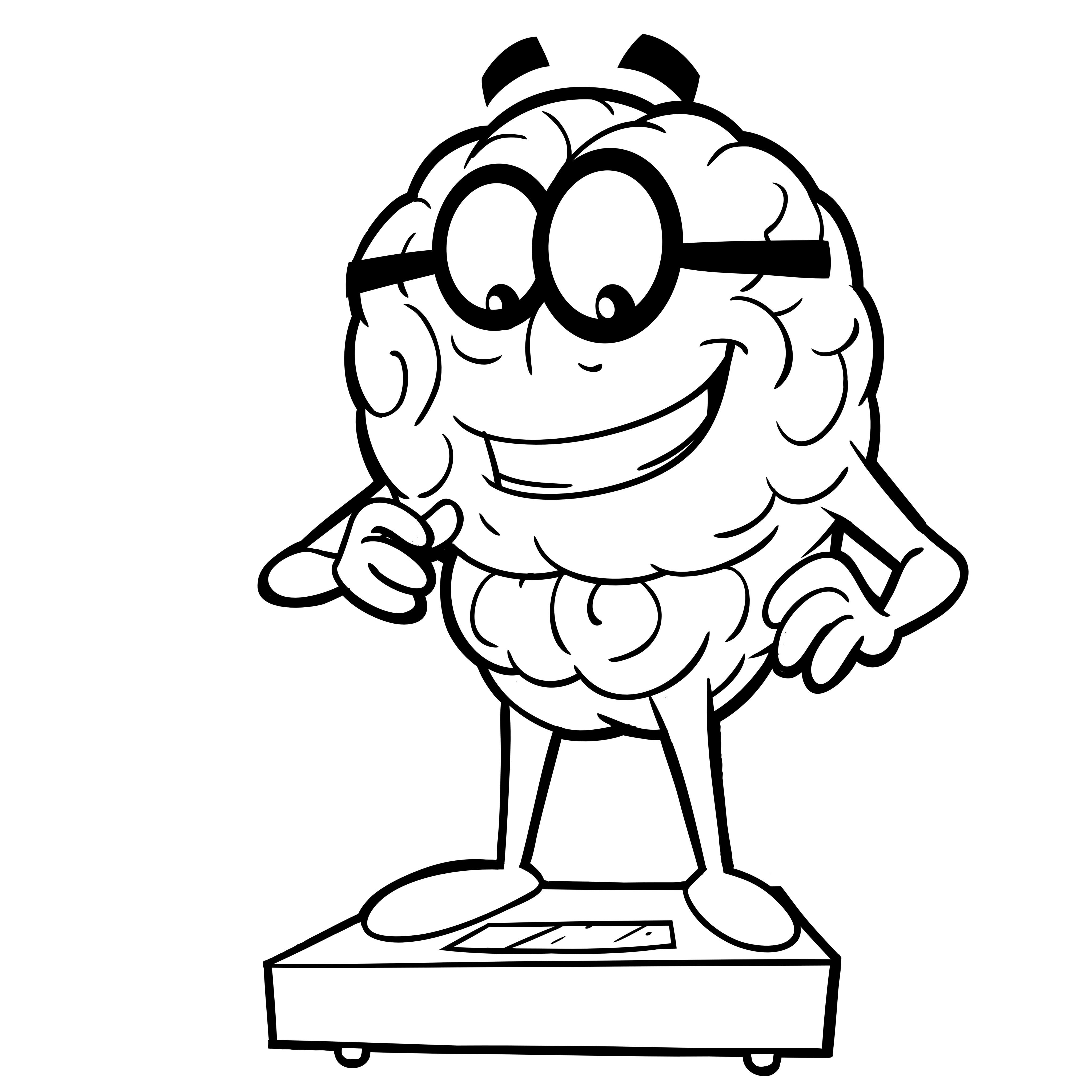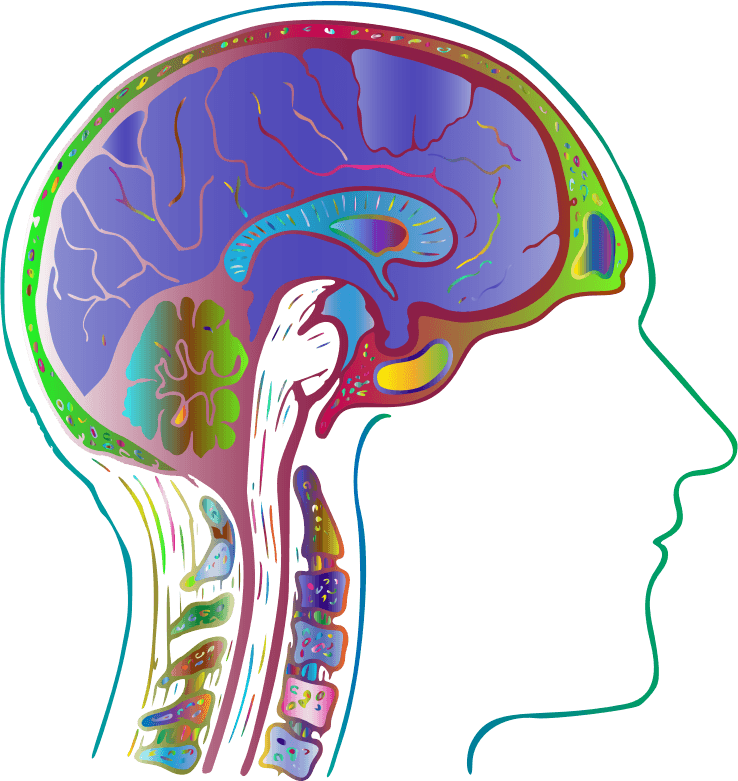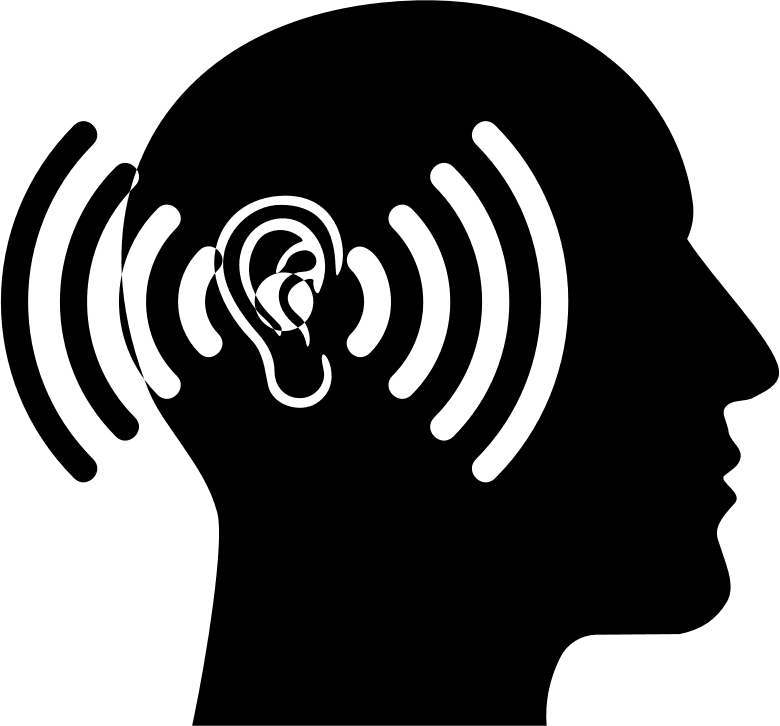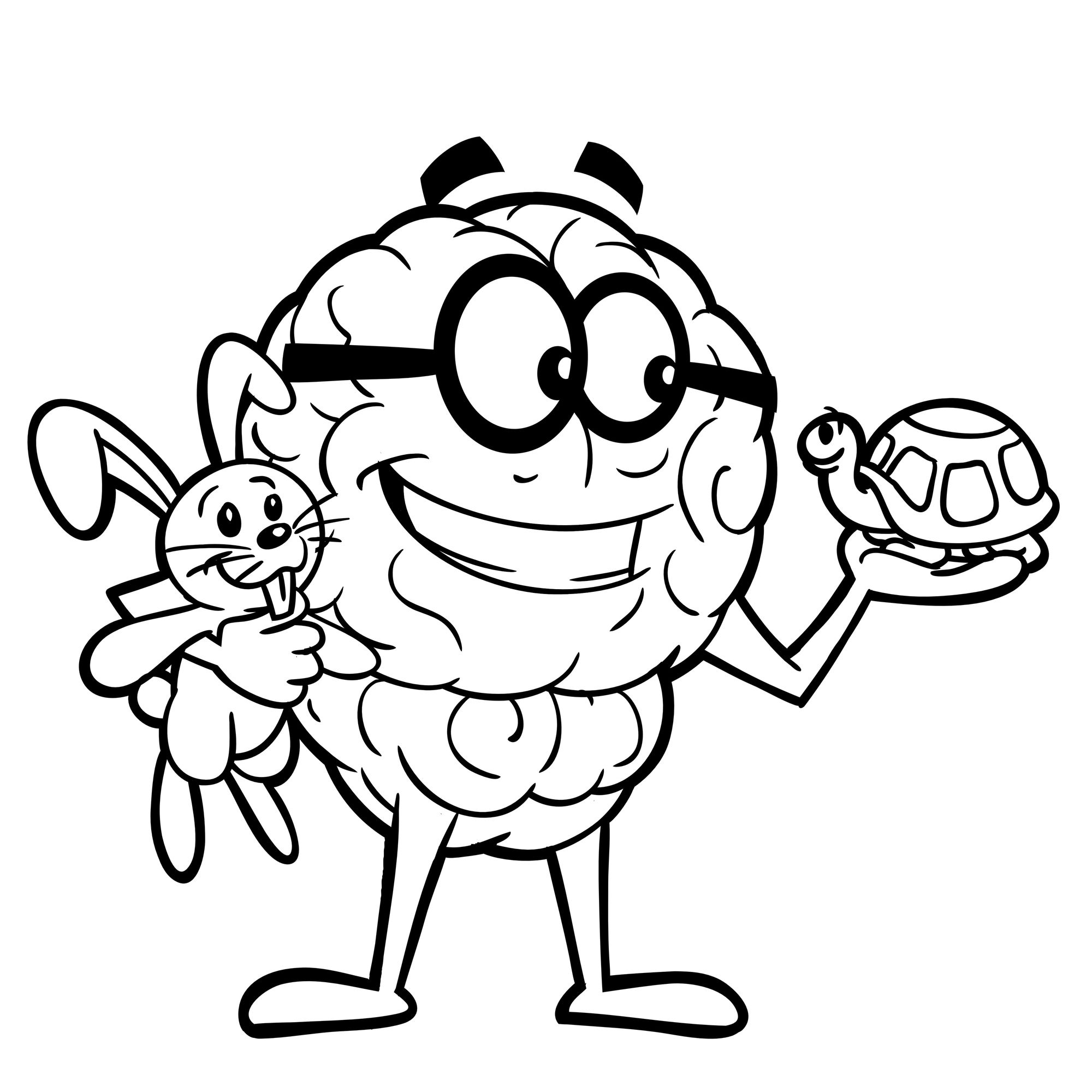Module 1 – Mindset and Self-talk

LLM Online
©Arlene R. Taylor, PhD
Module #1 — Mindset and Self-talk
Your thoughts and expectations serve as the master plan for your subconscious mind. So whenever you think of something your subconscious mind will do its best to make it come true.
—M. Farouk Radwan, MSc.
To Begin
 Weigh yourself in your underwear or clothes that you will wear each week on the same scales—no belt, shoes, sweater, or jacket.
Weigh yourself in your underwear or clothes that you will wear each week on the same scales—no belt, shoes, sweater, or jacket.- Measure your waist around the level of your belly button.
- Calculate your Body Mass Index using the BMI chart. Use your height in centimeters.
- Record data on the Weekly Comparison form (please print form).
- Write in your own goal on the Daily Goals form (please print form).
- Post the Daily Goals form where you can see it easily. Record your data each day.
Most power is lost in one's own mind by thinking negative thoughts, by worrying about the future, by focusing on the past, as opposed to thinking positive, strong, and happy thoughts.
—Frederick Lenz
Overview
Thoughts, language, and actions basically follow a predictable and cascading pattern.
- You think thoughts. (Your mindset)
- You speak silently or aloud. (Your self-talk)
- You act. (Your behavior)
Your mindset drives your self-talk that results in your behavior.
Your habitual attitudes form neural circuits in the brain. If you choose to maintain a specific attitude, the brain can literally rewire itself to facilitate that attitude.
—Doc Childre & Howard Martin
 Reminder: Drink a big glass of water to hydrate your brain. View the Educational Video. (Stand and walk in place for at least a portion of the video to increase blood flow to your brain.)
Reminder: Drink a big glass of water to hydrate your brain. View the Educational Video. (Stand and walk in place for at least a portion of the video to increase blood flow to your brain.)
Science in a Nutshell
 Everything begins in your brain. Positive Mindset & Self-talk plus consistent practical application of knowledge equals a Longevity Lifestyle. It matters! Understanding the science behind each component can motivate you to apply it in a way that works for you and that you will maintain for the rest of your life—helping you stay healthier and younger for longer.
Everything begins in your brain. Positive Mindset & Self-talk plus consistent practical application of knowledge equals a Longevity Lifestyle. It matters! Understanding the science behind each component can motivate you to apply it in a way that works for you and that you will maintain for the rest of your life—helping you stay healthier and younger for longer.
- Your thoughts create your mindset—positive can-do or negative—cannot Your brain can only do what it thinks it can do. It is your job to tell it what it can do.
- Self-talk—what you say to yourself silently or aloud—follows your mindset. Make it positive and present tense. Stop telling yourself what you do not want to do or have happen and tell your brain only what you want to do and have happen as if it is already a done deal.
- Affirmations are positive, present-tense, words and phrases designed to impact both the conscious and subconscious minds. In turn, they affect mindset, self-talk, habits, and behaviors. Done correctly and appropriately, nothing else is as effective.
Affirmation is the programming language of the mind.
—Jean Marie Stine
As a Matter of Fact
1st –
The human brain forms the structural basis of all human thoughts and actions. It weighs a little over 3 lb. or 1.5 kg. Encephalization Level (EL) is the term for a relative brain size measure as the ratio between brain mass for an animal of a given size. For example: for humans 7.4–7.8; for elephants 1.75–2.36. Generally, brain size increases with body size. But not always. Reportedly, only three living species have brains larger than human beings: the elephant, the whale, and the porpoise. In humans the weight ratio between the brain and body far exceeds any of these. The brain-body size ratio for humans is 1/40. For elephants, 1/560—although elephants are believed to be quite intelligent.
 Humans use portions of all their brain all the time, but estimates are that only 10-15% of what goes on in the brain ever comes to conscious awareness. You have two minds: a conscious and a subconscious. Think of your conscious mind as the smaller portion of an iceberg sticking up out of the water and your subconscious mind as the larger portion submerged below. No metaphor is perfect, but you get the idea: if you think you can, the brain mobilizes its considerable resources to help you. If not, it does little if anything to help you. Your massive subconscious (80% of your brain tissue plus your body) apparently never sleeps. It is always thinking, and it has an uncanny sense of whether you mean business. Your subconscious mind is far more powerful than your conscious mind. Current estimates are that about 90-95% of brain neurons are involved in subconscious thought—as well as all the neurons in the body. Here is the paradox: You can only manage what you can identify, label, and describe, so the more you can bring to conscious awareness the better. Interestingly, “thought” is so complex that science has yet to discover how it really occurs.
Humans use portions of all their brain all the time, but estimates are that only 10-15% of what goes on in the brain ever comes to conscious awareness. You have two minds: a conscious and a subconscious. Think of your conscious mind as the smaller portion of an iceberg sticking up out of the water and your subconscious mind as the larger portion submerged below. No metaphor is perfect, but you get the idea: if you think you can, the brain mobilizes its considerable resources to help you. If not, it does little if anything to help you. Your massive subconscious (80% of your brain tissue plus your body) apparently never sleeps. It is always thinking, and it has an uncanny sense of whether you mean business. Your subconscious mind is far more powerful than your conscious mind. Current estimates are that about 90-95% of brain neurons are involved in subconscious thought—as well as all the neurons in the body. Here is the paradox: You can only manage what you can identify, label, and describe, so the more you can bring to conscious awareness the better. Interestingly, “thought” is so complex that science has yet to discover how it really occurs.
Generally speaking, affirmations are used to reprogram the subconscious mind.
—Kathryn J Lively, PhD
2nd –
Mindset begins with a thought—conscious or subconscious. Your thoughts form your mindset. . . which generates your self-talk… which impacts the emotions that arise… which affects your choices… which drives your behaviors… which influences the course of your life in every way imaginable. A “trickle-down” effect, compare it to a cascade of water that starts at the top and descends in a series of steps, finally reaching the free-flowing river. You develop your mindset early in life from:
--what you hear people say to you
 --what you hear others say about you
--what you hear others say about you
--what you observe your care providers doing, i.e., their behaviors
In her book Mindset, Dr. Carol Dweck describes two general types: a fixed mindset and a growth mindset. She points out that a growth mindset does not force you to pursue something. It just tells you that you can develop your skills: it is still up to you whether you choose to do so. Individuals with a fixed mindset believe that who they are is carved in stone. When they perceive failure, they feel unlucky, worthless, and often give up. Those with a growth mindset believe that improvement is possible. They are open to learning and pursue it. They obtain information, turn it into knowledge, apply it, rehearse, learn from their experience, are aware and vigilant, and course correct as needed.
In studies of children ages 4-6, researchers found that the kids had already developed a mindset. The children were told: “You have a choice: you can redo an easy jigsaw puzzle, or you can try a harder one.” Children with a fixed mindset chose to redo the same puzzle because they wanted to succeed and look smart. Children with a growth-mindset chose the new harder puzzle so they could improve, learn something new, and become smarter.
Your mindset matters. It affects everything—from the business and investment decisions you make, to the way you raise your children, to your stress levels, and to your overall well-being.
―Deepak Chopra, MD
 Reminder: Drink a glass of water. Listen to Chapter 1 of “Just the Facts” audiobook. If possible, walk around the room while you listen. At least walk in place.
Reminder: Drink a glass of water. Listen to Chapter 1 of “Just the Facts” audiobook. If possible, walk around the room while you listen. At least walk in place.
3rd –
Everything starts in the brain, and it begins with a mindset—yours. Mindset is a mental attitude or disposition that predetermines your responses;  a set of opinions about something that strongly influences your inclinations. It establishes your direction, tells you where you are headed on the map of your life—and gets your brain on board (or not). Think of it as a lens through which you identify, perceive, respond to, and act upon what happens both inside and outside of you. Your mindset is a metaphorical map for your brain to follow. Life experiences can influence the type of mindset you develop, but no one can create it for you. That is up to you.
a set of opinions about something that strongly influences your inclinations. It establishes your direction, tells you where you are headed on the map of your life—and gets your brain on board (or not). Think of it as a lens through which you identify, perceive, respond to, and act upon what happens both inside and outside of you. Your mindset is a metaphorical map for your brain to follow. Life experiences can influence the type of mindset you develop, but no one can create it for you. That is up to you.
Fortunately, a mindset can be changed. You are the only person who can change your mindset. If you grew up with a fixed mindset, you are the only person who can flip the switch from a fixed to a growth mindset. Remaining healthier and younger for longer is possible: it all begins in your brain with a growth mindset. Sometimes just doing that can make all the difference in the world, even impacting your lifespan. In the process, if you choose a growth mindset, your rate of making mistakes may decrease even as your rate of success increases. You may find yourself less fearful when needing to learn new information.
Your subconscious mind is always listening to and believing in everything you repeatedly say to yourself or about yourself. Avoid becoming your own enemy of progress.
—Edmond Mbiaka
4th –
Mindset alters your neurochemistry which, in turn, impacts your immune system. Mindset also influences everything from happiness and wellness to success and longevity.  Although mindset happens internally, what occurs outside your brain and body tends to mirror what is happening on the inside. In other words, your mindset has a way of aligning in harmony with either the negative or the positive. Those who are truly successful are known for being able to move from mistake to mistake (as all humans do) with no loss of enthusiasm. The choices you make automatically—or by conscious consideration—are influenced by your mindset.
Although mindset happens internally, what occurs outside your brain and body tends to mirror what is happening on the inside. In other words, your mindset has a way of aligning in harmony with either the negative or the positive. Those who are truly successful are known for being able to move from mistake to mistake (as all humans do) with no loss of enthusiasm. The choices you make automatically—or by conscious consideration—are influenced by your mindset.
| Whether you believe you can do a thing or not, you are right.—Henry Ford |
Your brain can only do what it thinks it can do. Your job is to tell your brain what it can do. What behavior do you know would improve your life? If your mindset is not serious or you think you can’t, your brain will not help you. If your growth mindset believes you can do it, your brain will marshal its considerable resources to help you. Only one idea can occupy the brain’s working memory at a time. Negative thoughts trigger the recall of negative memories. Positive thoughts flood working memory with positivity, triggering recall of constructive memories. Either you choose to control your mindset or outside factors will—and your mindset makes all the difference. Negativity rarely (if ever) solves anything. Usually it creates even more problems, triggering the stress response.
Your subconscious mind is always listening to and believing in everything you repeatedly say to yourself or about yourself. Avoid becoming your own enemy of progress.
—Edmond Mbiaka
5th –
Self-talk is simply a label for what human beings—including you—tell themselves internally or aloud. Self-talk springs from your mindset, your beliefs, and what people tell you or what you hear them say about you. It has a huge impact on your life by creating your reality, influencing your thoughts and feelings, and triggering your behaviors. Negative self-talk is most unhelpful and can lead to discouragement, self-pity, a sense of hopelessness or helplessness, failure, and depression. Positive self-talk helps you achieve goals that include happiness and health, enhanced relationships, and a potential increase in longevity.
The human brain is designed to deal easily with positive words and instructions—a 1-step process that tells you immediately what to do. What you picture is what you want to have happen. Example: “Keep your hands away from the stove.” The picture is a hand away from the stove. The brain finds it a challenge to deal with negatives—a 2-step process such as, “Don’t touch the stove!” This creates a picture of touching the stove. The ‘don’t’ is supposed to alert your brain that it is expected to do something else. But what? In addition, the 1st and 2nd subconscious brain layers may miss the ‘don’t’ altogether and just follow the first picture anyway. Go for the positive style!
We all have voices in our heads which talk to us onan almost constant basis. Our voices give us messages continually and what they say to us affects us.
—Juliene Berk
 Reminder: Drink a glass of water. Listen to Chapter 2 of “Just the Facts” audiobook. If possible, walk around the room while you listen. At least walk in place.
Reminder: Drink a glass of water. Listen to Chapter 2 of “Just the Facts” audiobook. If possible, walk around the room while you listen. At least walk in place.
6th –
You tend to talk to others in the same self-talk style you use with yourself—which style is likely to be more effective?
- I don’t want to yell at my children OR speak kindly to the children.
- Don’t forget your homework OR Mary, put your homework in your book bag.
Note: The famous Lord’s Prayer is written in a positive one-step style telling you what to do.
According to Daniel M. Wegner, PhD, what you tell yourself and the words you use make all a difference to your success. If you say, “Don’t think about the white bear,” a representation of a white bear goes into working memory and you tend to think about it even more. Based on brain-imaging research, say only what you want to have happen; speak as if the desired behavior is already in place and happening right now. This is critical for altering behavior. Start with your first name (so your brain knows who you are talking about). Use short, positive, present-tense words. For example:
If you say, “Don’t think about the white bear,” a representation of a white bear goes into working memory and you tend to think about it even more. Based on brain-imaging research, say only what you want to have happen; speak as if the desired behavior is already in place and happening right now. This is critical for altering behavior. Start with your first name (so your brain knows who you are talking about). Use short, positive, present-tense words. For example:
- Mark, you are drinking water. You like the taste. You feel good.
- Marla, you are walking in the park. You feel good. You enjoy yourself.
Research by Dr. Ethan Kross found that using your ‘given name’ and ‘you’ empowered study participants, so that what others saw as a threat, they viewed as a doable challenge. Your brain is a ‘sponge.’ Using ‘I’ and ‘me’ subjectively hooks into your ego and self-esteem level. Using your ‘first name’ and ‘you’ helps depersonalize things slightly and indicates that you are working with your brain.
Studies by Laura Berk reported that effective parents, teachers, and caregivers teach children the unemotional, useful, step-by-step language for mastering any task through role-modeling effective self-talk. The children, in turn, are more likely to use the language in their self-talk to teach themselves. The well-taught child might say: “Jack (or Jill), you are doing it—try again.”
Every waking moment we talk to ourselves about the things we experience. Our self-talk, the thoughts we communicate to ourselves, control the way we feel and act.
—John Lembo
7th –
The body’s energy is closely connected with mindset, self-talk, and the internal mental pictures these create. Positive self-talk patterns strengthen the immune system and increase energy levels. Negative thoughts and feelings deplete energy. Anxiety and anger are energy eaters. A negative self-talk style can turn into a vicious cycle that drags you down. Pay attention—since all you are is energy! A positive self-talk style brings an extra bonus, since studies show that you tend to communicate with others in the way you talk to yourself.
 Use a growth mindset and positive self-talk. Learn to speak to yourself as you would to your best friend. Matter of fact be your own best friend. After all, you are the only person who will be with you for your entire life! When you learn to speak positively to yourself, you will tend to begin using that same style in communicating with others. This is more likely to result in a desired outcome. It may not achieve 100 percent, but studies suggest an 85 percent advantage.
Use a growth mindset and positive self-talk. Learn to speak to yourself as you would to your best friend. Matter of fact be your own best friend. After all, you are the only person who will be with you for your entire life! When you learn to speak positively to yourself, you will tend to begin using that same style in communicating with others. This is more likely to result in a desired outcome. It may not achieve 100 percent, but studies suggest an 85 percent advantage.
Your self-talk is the channel of behavior change.
―Gino Norri

Reminder: Watch the short Birds & Brains video. Stand and walk in place for at least part of the video.
Practical Applications
- Make it a priority to create and maintain a positive mindset. Every time a negative thought surfaces, change it into a positive thought. What you tell yourself silently or aloud and how you frame it makes all the difference in the world. Self-talk matters!
- Learn from your mistakes and from those of others. You cannot live long enough to make them all yourself. Course-correct quickly and move on. Forgive yourself for your mistakes—they simply verify you are human. Be aware of the "Physiology of Forgiveness"®. According to research by internationally renowned cardiologist Herbert Benson, MD, being unable to forgive yourself (or the faults of others) is harmful to one’s health.
 When you awake and it is time to "rise and shine," boot up your brain like you would access an energy source to boot up your computer. There are several options. For example:
When you awake and it is time to "rise and shine," boot up your brain like you would access an energy source to boot up your computer. There are several options. For example:
| Brain Breathing Breathe in through your nose to a count of 4; hold your breath for a count of 12; breathe out through pursed lips to a count of 8. |
-
- Take two or three brain breaths. (Also, repeat whenever you feel sluggish.)
-
- Do mild aerobic exercise for 20 minutes before you break your “sleep-time fast.”
-
- Eat breakfast to give your brain “fuel” for glucose. Include some healthy carbs. Body cells can utilize carbs, proteins, and fats for energy. Healthy carbs are the best source for brain cells.
Human beings can alter their lives by altering their attitudes of mind.
—William James
Think & Do
 What type of mindset did you see role-modeled growing up?
What type of mindset did you see role-modeled growing up?
Was it primarily positive or negative? Is your current habitual mindset positive can-do or negative cannot do?
Think what you want to have happen. See it in your mind’s eye, and create a picture for your subconscious to follow .- How were you spoken to growing up?
Was it typically affirming can-do or disaffirming cannot? Were you primarily told what you could or could not do? What did you hear others say about you?
Based on how you were spoken to in childhood or what you heard said about you, you may have a great many negative (or positive) thoughts running through your mind and influencing your behaviors. Be of aware of your thoughts. The moment you become aware of a negative thought, choose to reframe it into a positive thought. - Is your habitual self-talk negative or positive?
Studies have shown that the average person in an average moderately functional family heard 10 negatives for every positive. In a dysfunctional family the ratio may be more like 30 or 40 negatives to every positive. It will take some practice to over-ride those old “tapes” playing inside your head. Metaphorically, just reach up and turn down the volume when you “hear” negative tapes from your past.
Stop talking about what you do not want to have happen. Say only what you want to have happen in positive, present-tense language as if it already is happening. Practice, practice, practice. When you catch yourself using negatives or future tense, course-correct immediately. The brain tends to get in gear when it thinks you need something right now. Not next week, not next month, not next year.
Studies show that most people tend to talk to others the way they talk to themselves. When you are tempted to say something negative, think of something positive and say that instead. Since negativity drains energy, choosing to think and speak positively can increase your energy.
Even an “endangered species” could go for that!
If you want to know what your thoughts were like in the past, look at your body today. If you want to know what your body will be like in the future, look at your thoughts today.
—Rudolph E. Tanzi, Deepak Chopra, MD
Slow & Steady Wins

Spend the whole week on Module 1. Reread the module; do your Daily Goals; listen to the audiobook excerpts and watch the Videos again. (It takes an average of four times through new material for the adult brain to really absorb it and turn it into a new behavior.) If you want positive and long-lasting results, rushing through the material (just because you can) may sabotage your desired outcome.
Practice, practice, and practice a growth mindset and a positive self-talk style. Get plenty of sleep so your brain has time to "consolidate"—transfer—what you are learning from short term to long term memory. Drink plenty of water to keep your brain hydrated—so it can generate the mental energy you need. Your thinking cells—called neurons—are estimated to be about 85 percent water. Dehydration is unhelpful in brain central.
This is where you will win the battle—in the playhouse of your mind.
—Maxwell Maltz
 See you next week for LLM Online Module 2
See you next week for LLM Online Module 2
Topic:
Emotional Intelligence (EQ) – How to minimize conflict, enhance relationships, and increase success.
Lesson List
- Module 2 – Emotional Intelligence (EQ)
- Module 2 – To Begin
- Module 2 – Slow & Steady Wins
- Module 1 – Mindset and Self-talk
- Module 1 – To Begin
- Module 1 – Slow & Steady Wins
- Module 1 – Mindset (educational video)
- Module 1 – Birds & Brains (video)
- Module 1 – Just the Facts - Chapter 1 (audio)
- Module 1 – Just the Facts - Chapter 2 (audio)
- Module 2 – EQ (Emotional Intelligence) (video)
- Module 2 – Just the Facts - Chapter 3 (audio)
- Module 4 – Sleep
- Module 4 – To Begin
- Module 4 – Slow & Steady Wins
- Module 3 – Mental & Physical Exercise
- Module 3 – To Begin
- Module 3 – Slow & Steady Wins
- Module 5 – Water
- Module 5 – To Begin
- Module 5 – Slow & Steady Wins
- Module 6 – Safety
- Module 6 – To Begin
- Module 6 – Slow & Steady Wins
- Module 7 – Sunlight
- Module 7 – To Begin
- Module 7 – Slow & Steady Wins
- Module 8 – Nutrition
- Module 8 – To Begin
- Module 8 – Slow & Steady Wins
- Module 10 – Support Network
- Module 10 – To Begin
- Module 11 – Stressors
- Module 10 – Slow & Steady Wins
- Module 9 – Laughter
- Module 9 – To Begin
- Module 11 – To Begin
- Module 9 – Slow & Steady Wins
- Module 11 – Slow & Steady Wins
- Module 12 – Life Satisfaction
- Module 12 – To Begin
- Module 12 – Slow & Steady Wins
- Module 2 — Birds & Brains, No. 2 - EQ (video)
- Module 3 – Exercise (educational video)
- Module 3 – Just the Facts - Chapter 4 (audio)
- Module 3 – Just the Facts - Chapter 5 (audio)
- Module 3 – Birds & Brains, No. 3 - Exercise (video)
- Module 4—Just the Facts - Ch. 6 (audio)
- Module 4—Birds & Brains #4 (video)
- Module 4—Sleep (educational video)
- Module 5—Water (educational video)
- Module 5 – Just the Facts - Chapter 7 (audio)
- Module 5 — Birds & Brains #5 (video)
- Module 6 – Safety (educational video)
- Module 6 – Just the Facts - Chapter 8 (audio)
- Module 7 – Birds & Brains #7 (video)
- Module 8 – Just the Facts - Chapter 10 (audio)
- Module 8 – Nutrition (educational video)
- Module 8 – Birds & Brains #8 (video)
- Module 7 – Just the Facts - Chapter 9 (audio)
- Module 6 — Birds & Brains #6 (video)
- Module 7 – Sunlight (educational video)
- Module 9 – Laughter (educational video)
- Module 9 – Just the Facts - Chapter 11 (audio)
- Module 9 – Birds & Brains #9 (video)
- Module 10 – Support Systems (educational video)
- Module 10 – Just the Facts - Chapter 12 (audio)
- Module 10 – Birds & Brains, No. 10 - Support Systems (video)
- Module 11 – Stressors (educational video)
- Module 11 – Just the Facts - Chapter 13 (audio)
- Module 11 – Birds & Brains No. 11 - Stressors (video)
- More Information
- Module 12 – Life Satisfaction (educational video)
- Module 12 – Birds & Brains, No. 12 - Life Satisfaction (video)
- Module 12 – Just the Facts - Chapter 14 (audio)
Teachers Info

Arlene R. Taylor, PhD
- Specialist:
- Website: https://www.arlenetaylor.org/
-
Arlene R. Taylor PhD, a leading speaker on brain function, is sometimes referred to as the brain guru. She specializes in simplifying this complex topic, with the goal of helping individuals understand more about the brain in general and their own in particular. She delights in helping others learn how to thrive by...

